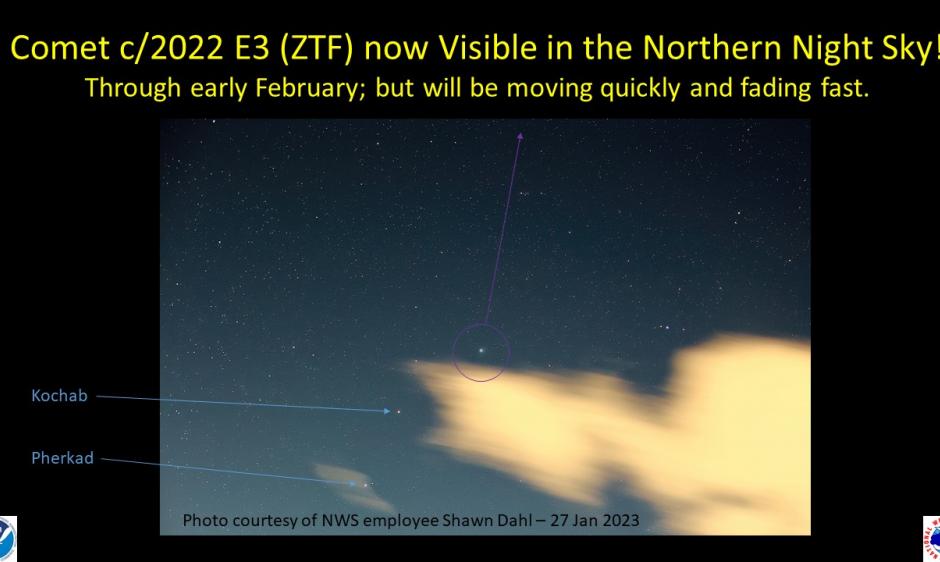
Now is the time to look up to the northern night sky! You may have heard of the "Green Comet" that has come back after 50,000 years; well, now are the last chances to see this wandering celestial marvel! The comet is actually referred to as Comet c/2022 E3 (ZTF) and it is easily visible to viewers who look north when it gets dark enough. The comet has gone around the Sun and it is now returning to well outside our solar system. However, it is rapidly moving higher and higher, so early February is a great time to look and wonder. The closest approach to Earth as it passes by will be Feb 1st - 2nd. For those near 40 degrees latitude, that means it will be nearly 50 degrees high in the northern sky. This 30-second exposed photograph was taken the night of Jan 27th, 2023, with just a 50mm lens and when the comet was not nearly that high in the sky yet - also looking through city light pollution and just above clouds. The comet at that time was almost a straight on view - so the comet's tail was mostly out of view behind the comet. If you know your constellations, the comet is rising higher and higher near and east of Ursa Minor. There are plenty of resources out there to tell you where exactly to look. Give it a try as the comet is still brighter than magnitude 6, but will only grow dimmer as we move out of the first week of February. Grab your binoculars or telescope and look for the fuzzy star. Perhaps you'll be treated to a growing comet tail as the angle of view gets better and we can see how the solar wind affects the comet!